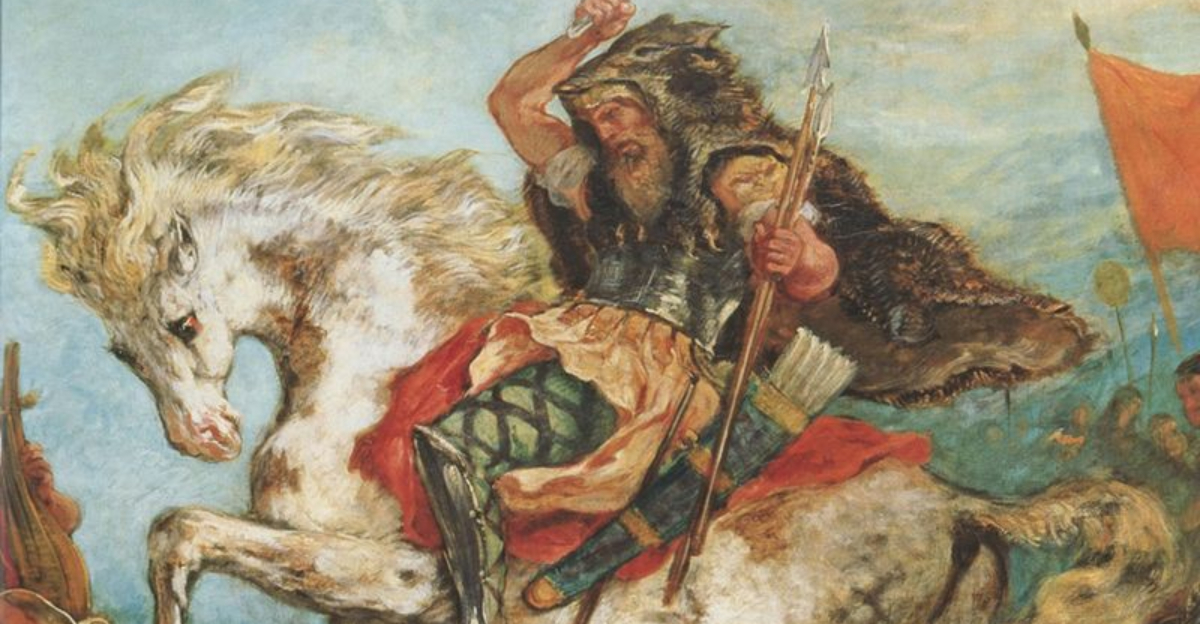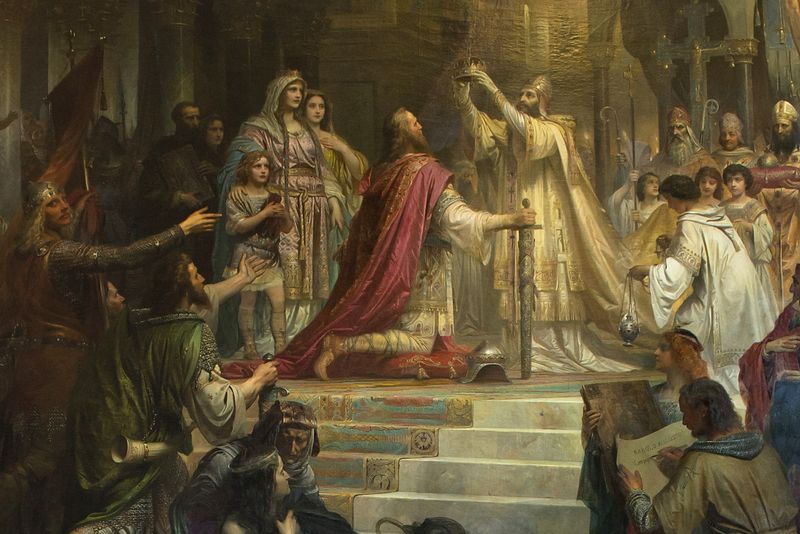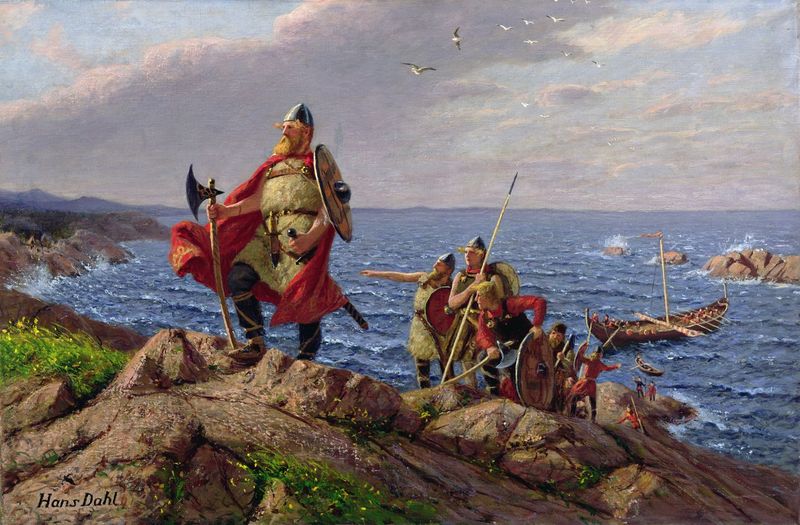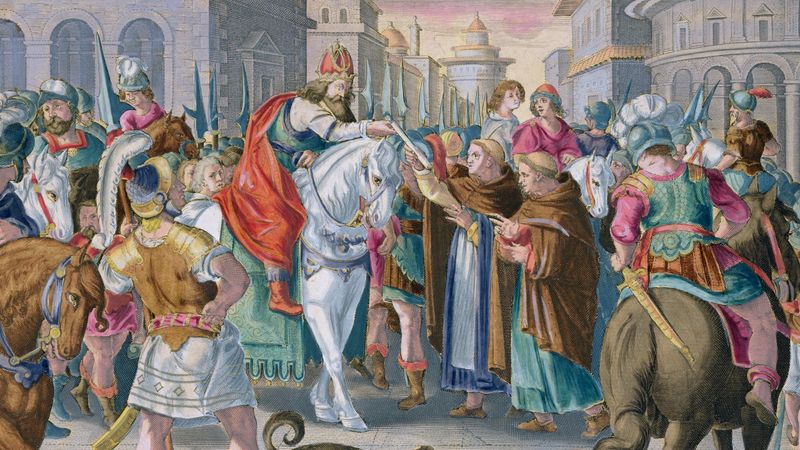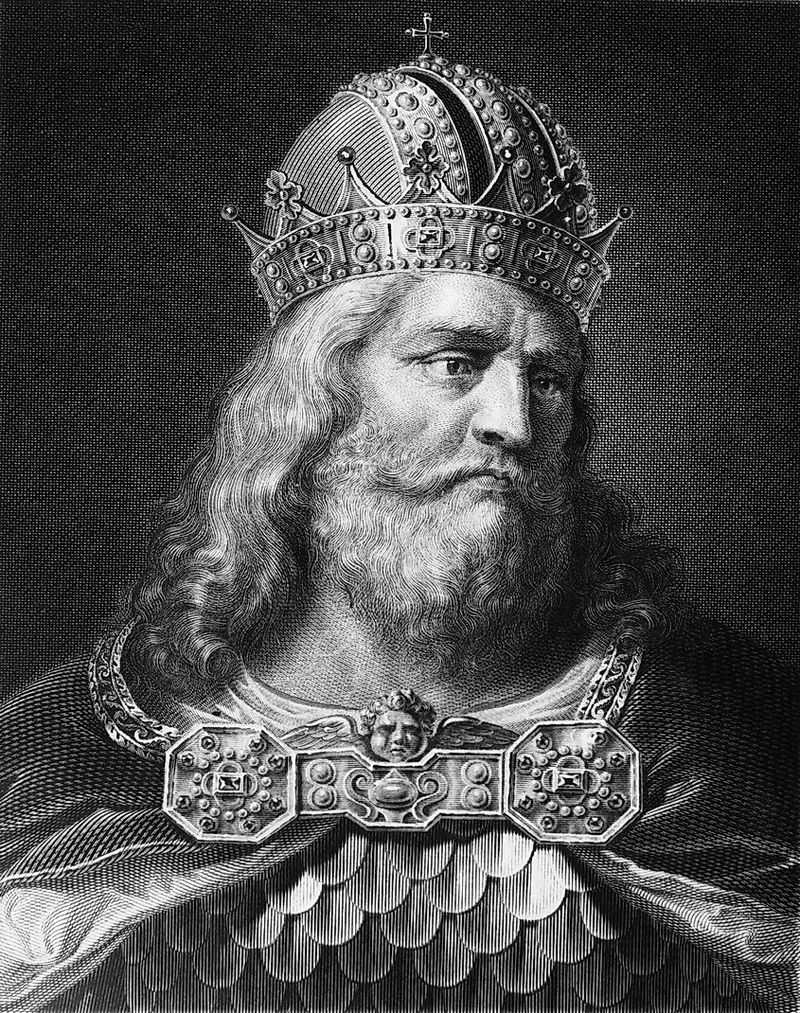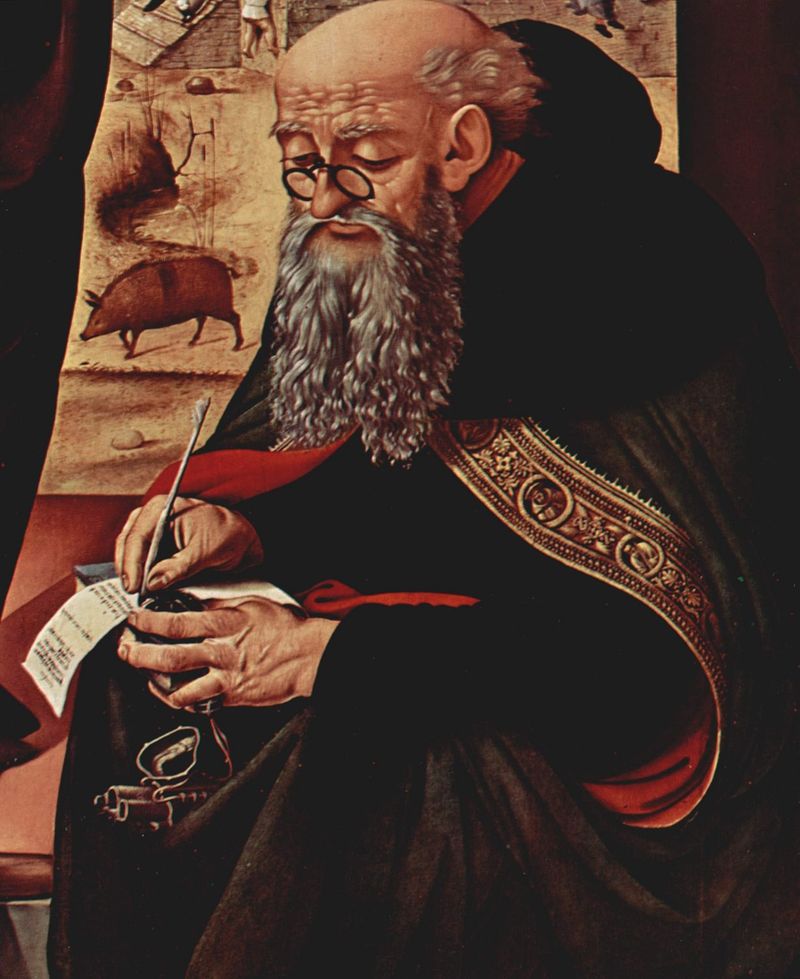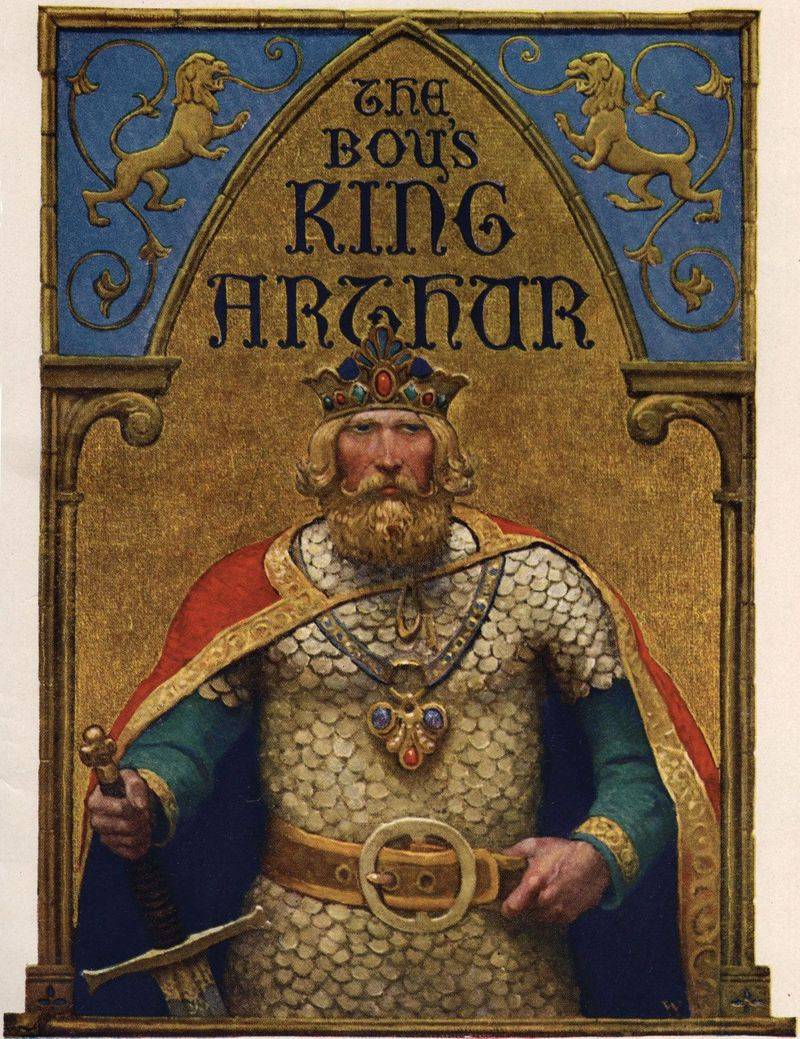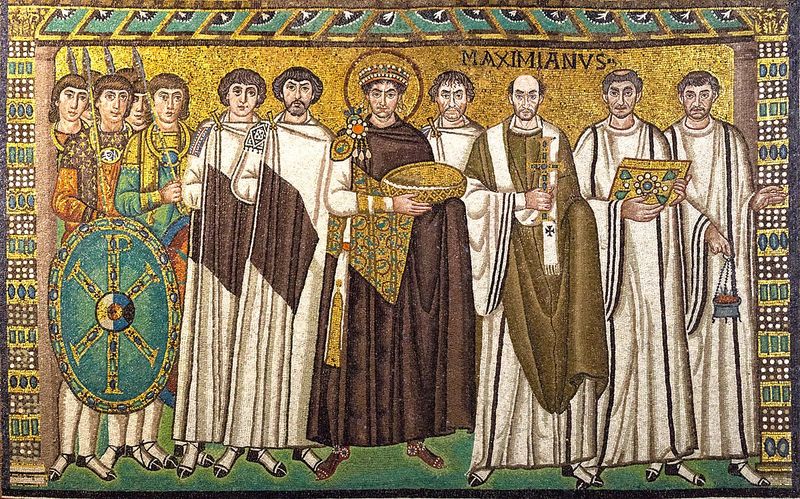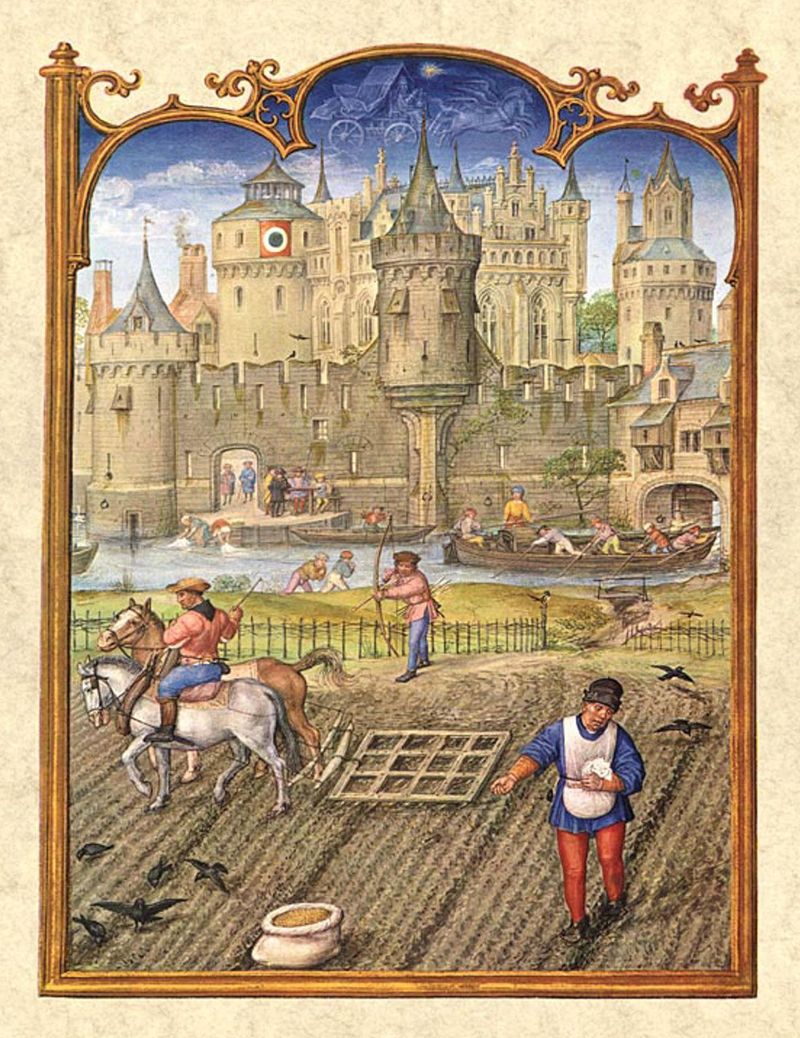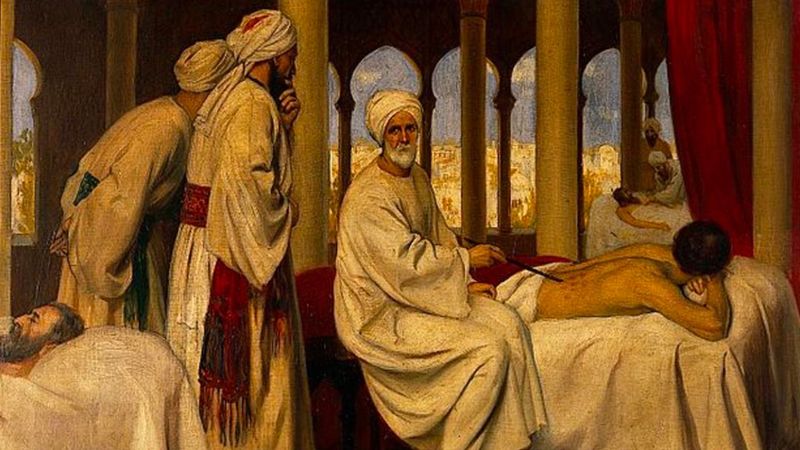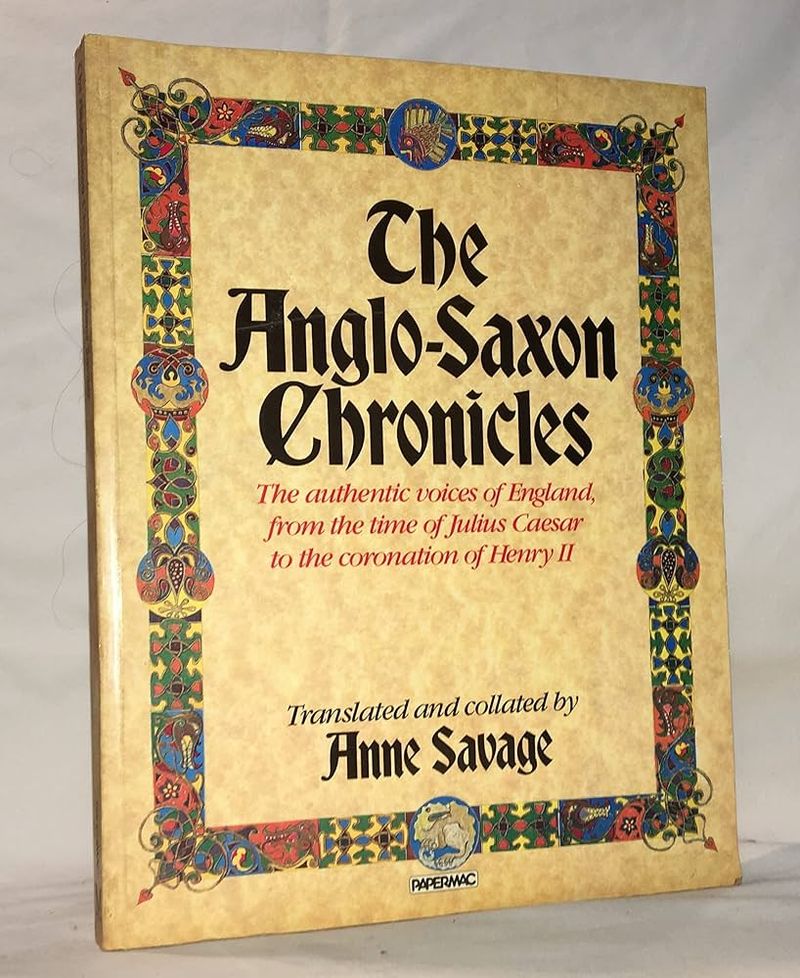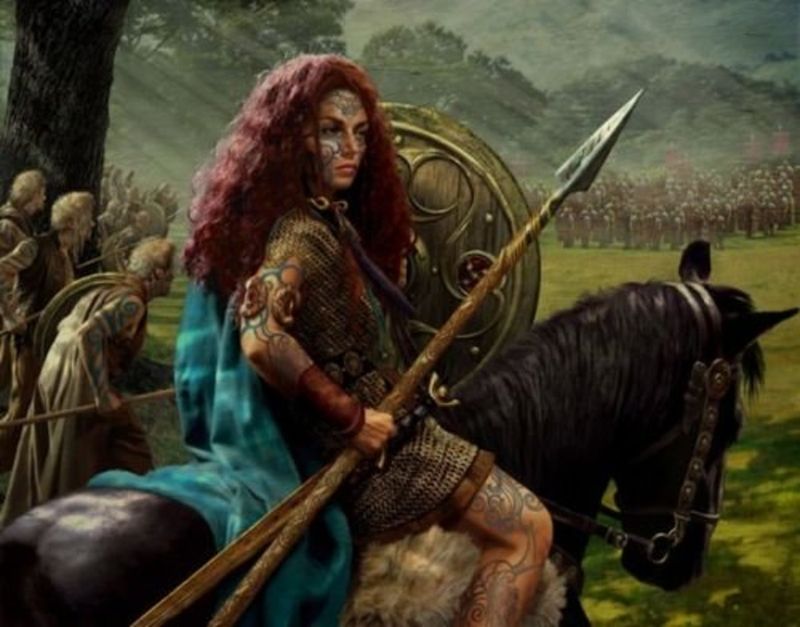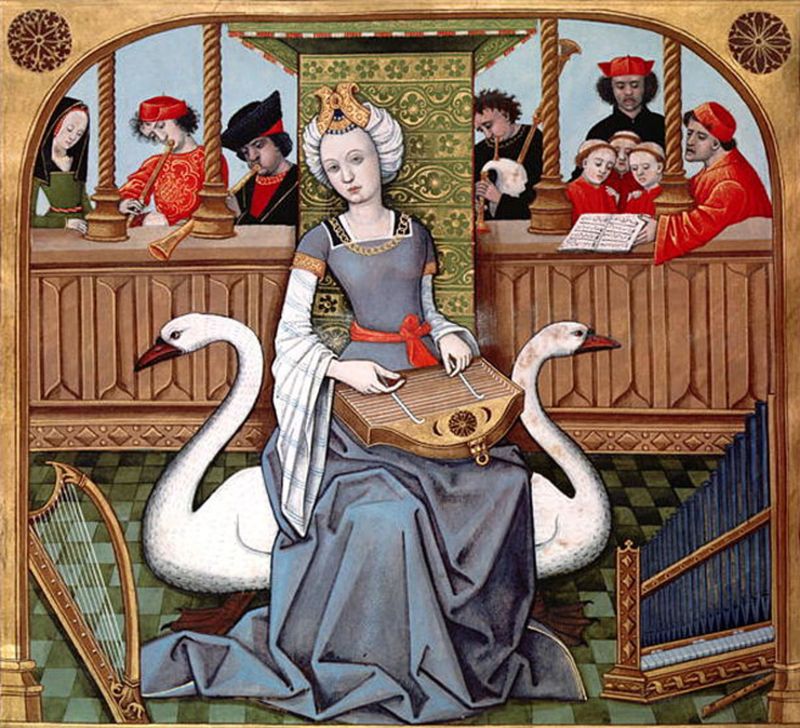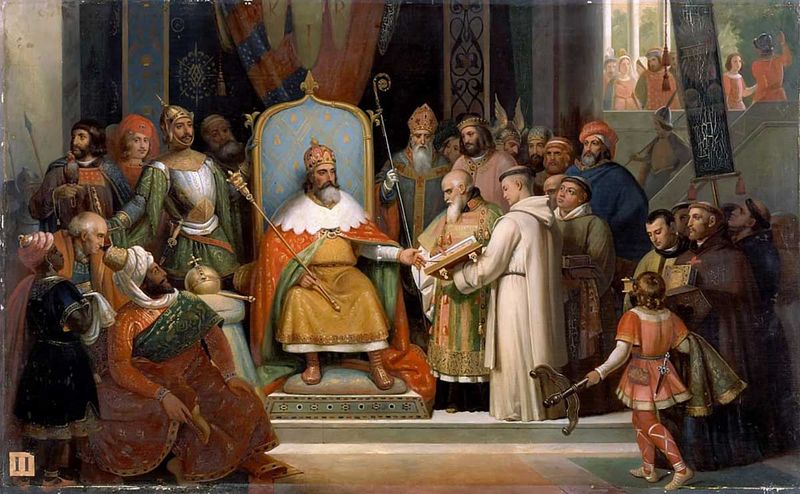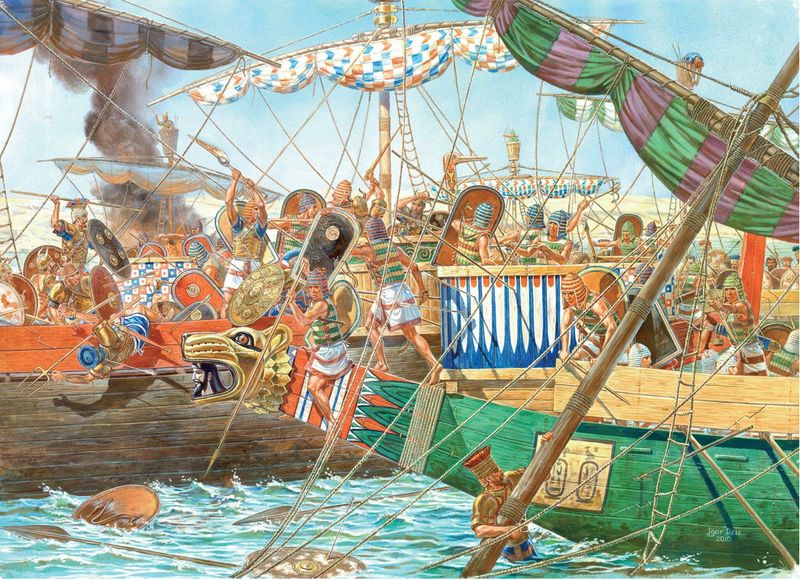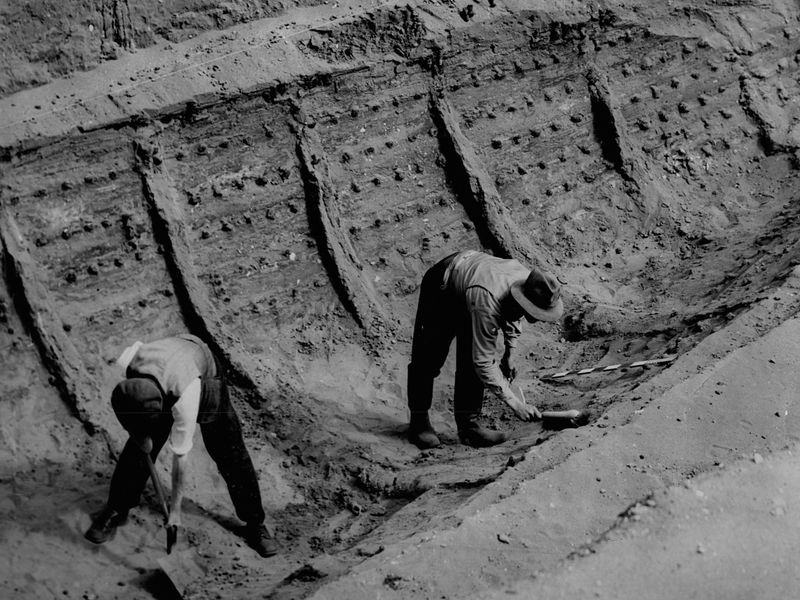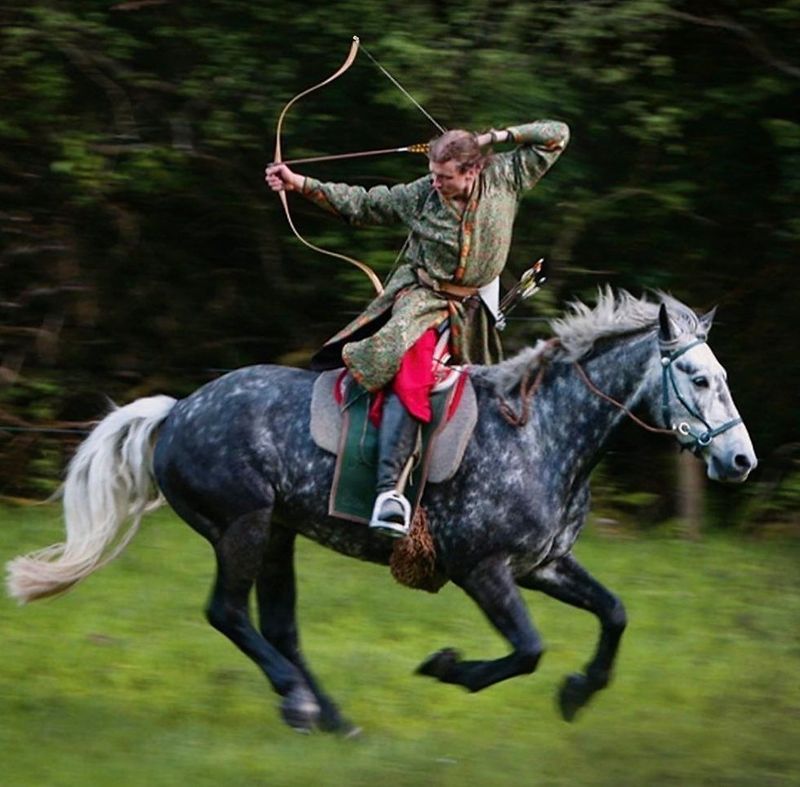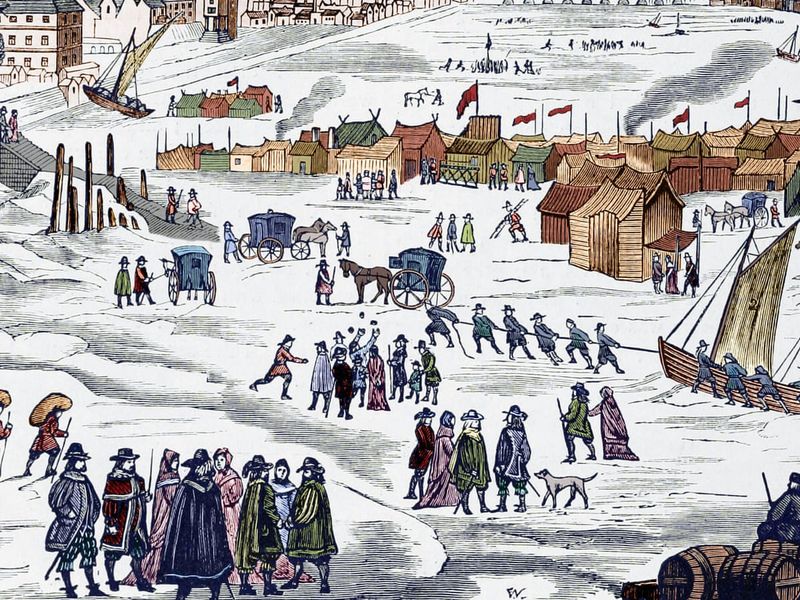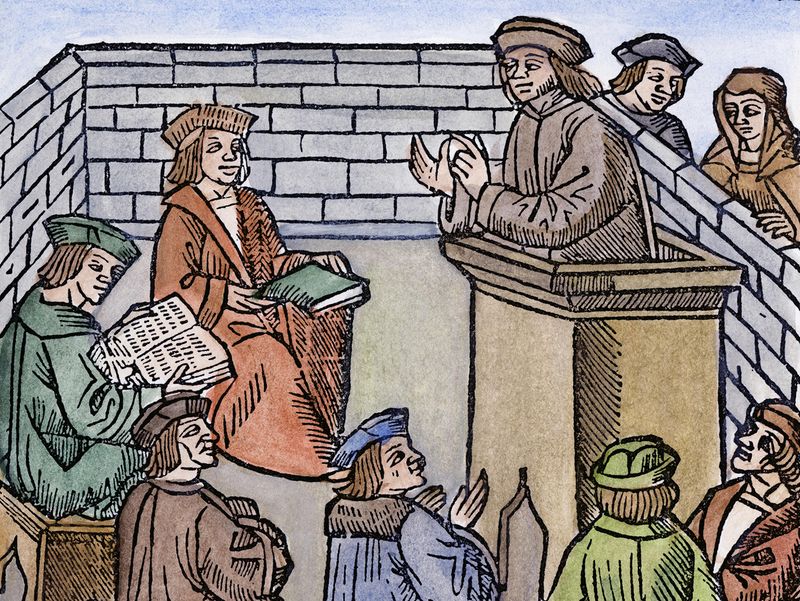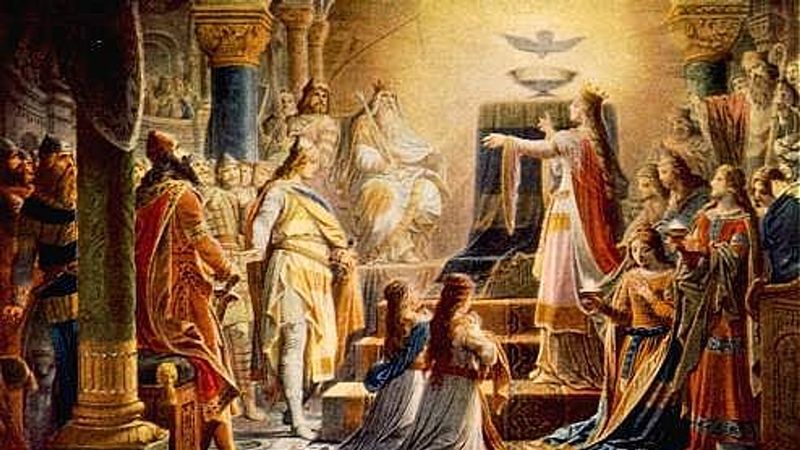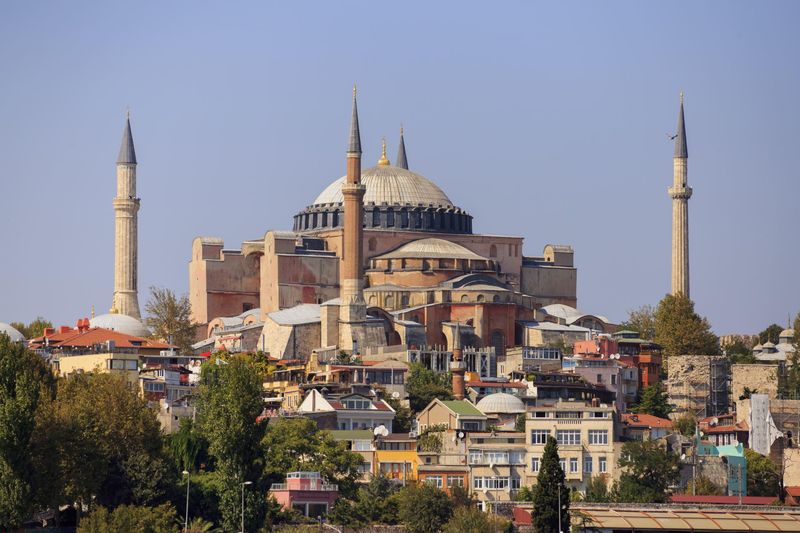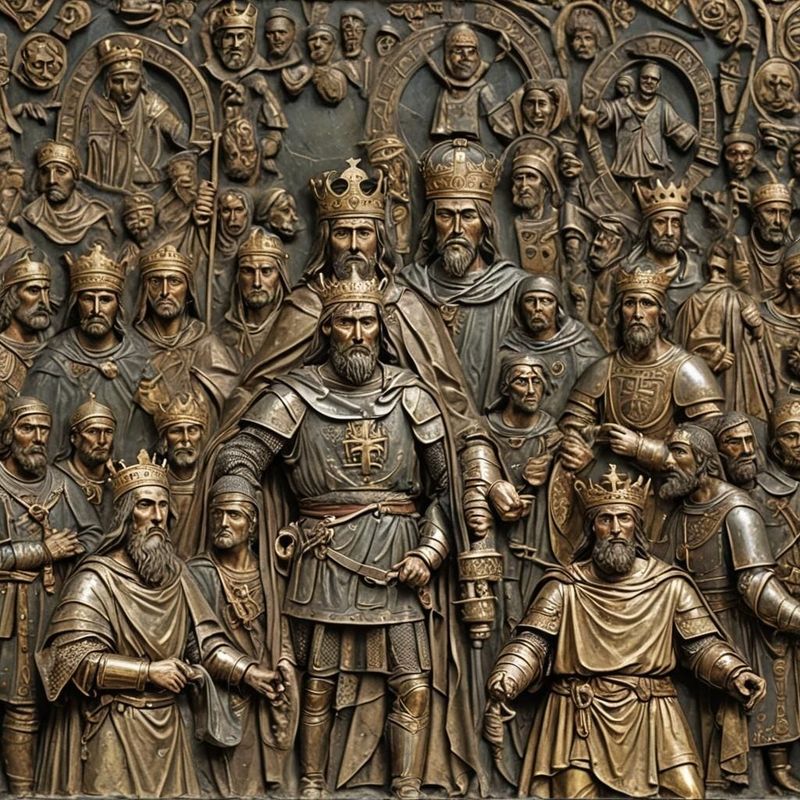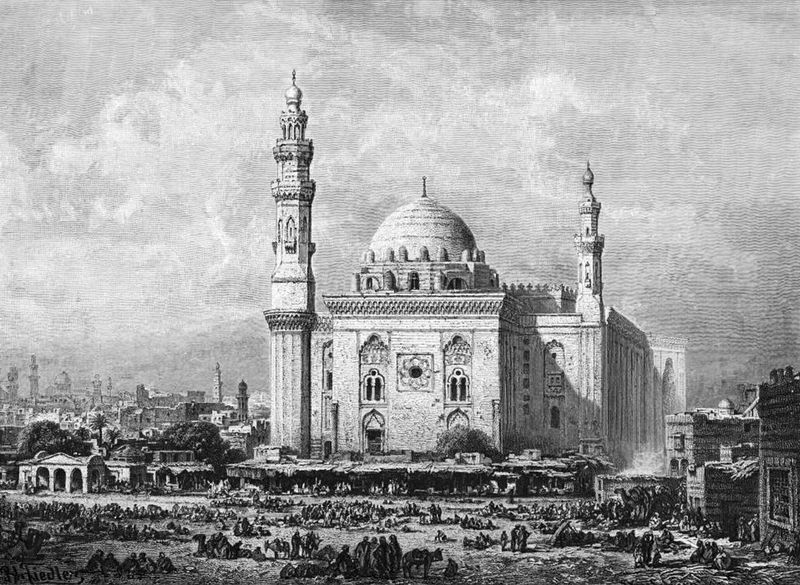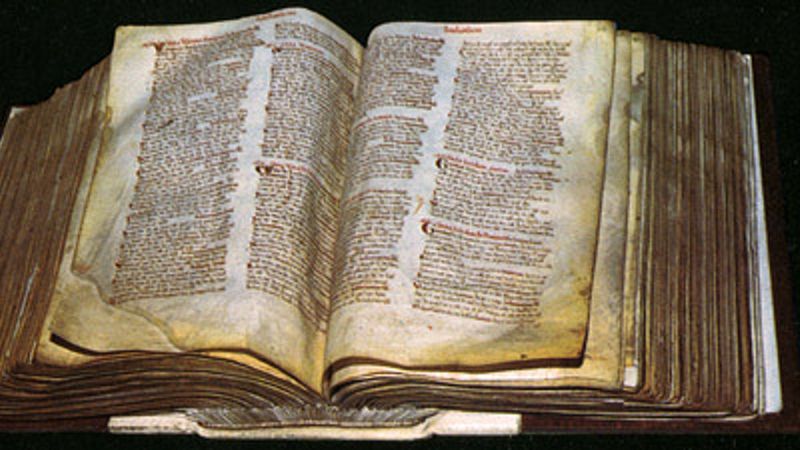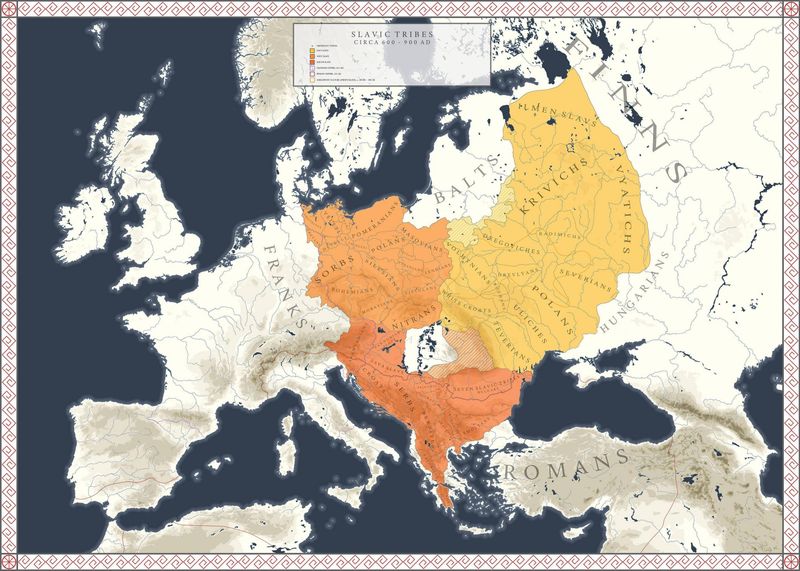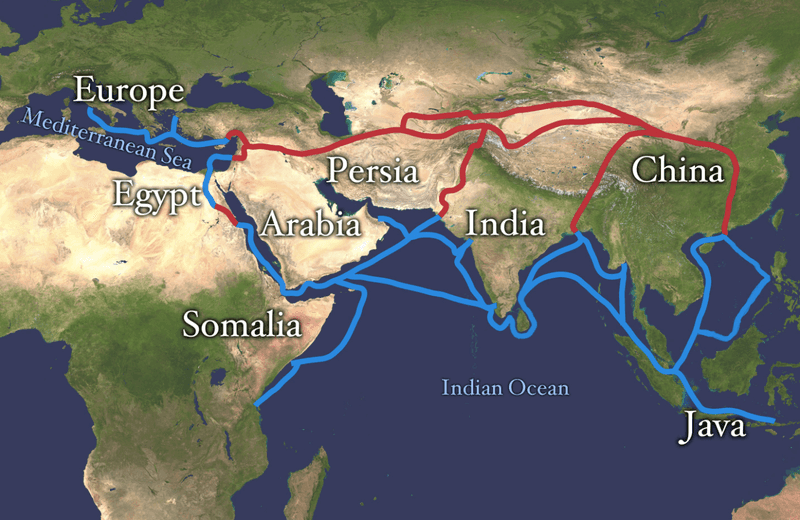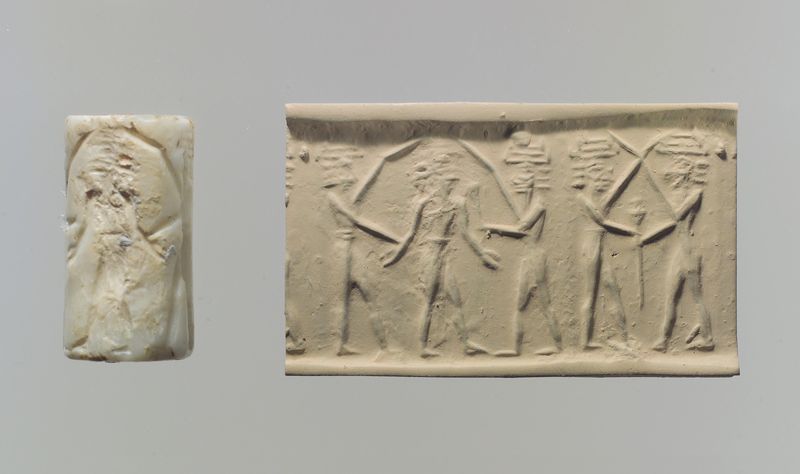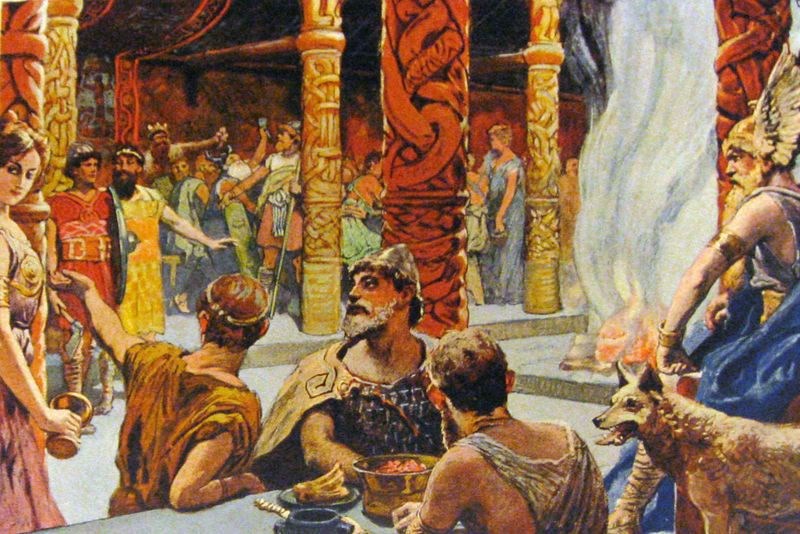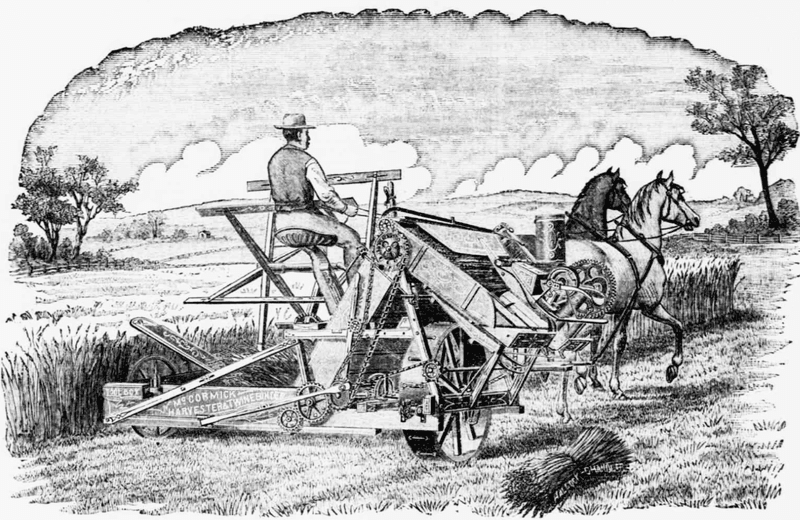The Dark Ages, often shrouded in mystery and misunderstood, span a fascinating period in European history from the fall of the Roman Empire to the onset of the Renaissance.
This era is frequently portrayed as a time of cultural decline, but recent scholarship has revealed a more complex narrative filled with surprising events, influential figures, and cultural developments.
In this blog post, we explore 30 intriguing facts about the Dark Ages that are often overlooked in traditional history classes. Each fact uncovers a layer of this enigmatic period, challenging common misconceptions and offering fresh insights.
1. The Myth of Darkness
Contrary to popular belief, the term ‘Dark Ages’ doesn’t reflect an era of total obscurity. In fact, it was coined in the 14th century by Petrarch to describe the perceived cultural stagnation between the classical era and his present day.
Despite some challenges, this period saw technological innovations and cultural developments. Art, science, and philosophy persisted, albeit in different forms than during Roman times.
Many regions in Europe continued to thrive, keeping ancient knowledge alive. Breaking from the darkness metaphor, one can find light and progress throughout this fascinating epoch.
2. Viking Exploration
Vikings weren’t just pillagers; they were also explorers and traders. During the Dark Ages, Vikings ventured far and wide, reaching as far as North America! Their longships enabled them to travel across oceans, facilitating trade and cultural exchange.
Viking sagas and archaeological evidence reveal their extensive networks and interactions with diverse cultures. These voyages expanded their horizons and fostered knowledge transfer.
By integrating new ideas and technologies, they contributed to the cultural landscape of Europe. Their influence is visible in art, language, and even genetics, making their legacy enduring.
3. The Byzantine Empire
While Western Europe grappled with instability, the Byzantine Empire thrived. This continuation of the Roman Empire played a crucial role during the Dark Ages, preserving classical knowledge and fostering artistic achievements.
The Byzantines excelled in governance, architecture, and law, influencing future civilizations. Their capital, Constantinople, became a hub of culture and trade, attracting scholars and merchants from around the world.
Byzantine art, characterized by glittering mosaics and religious icons, left an indelible mark on Christian art. Their sophisticated administration and military strategies also shaped European history, providing a bridge between ancient and medieval worlds.
4. The Rise of Charlemagne
Charlemagne emerged as a pivotal figure during the Dark Ages, unifying much of Western Europe under his rule. As King of the Franks, he expanded his realm through military conquests, diplomacy, and alliances.
His reign marked the Carolingian Renaissance, a period of renewed cultural activity and intellectual pursuit. Charlemagne’s efforts to promote education, standardize practices, and support the Church revitalized Europe.
His administration laid the groundwork for future governance systems. Known as the ‘Father of Europe,’ his legacy influenced European politics and culture for centuries. His leadership illuminated an era often seen as shadowy.
5. The Power of Monasteries
Monasteries were more than religious sanctuaries; they were centers of knowledge and innovation. During the Dark Ages, monks dedicated themselves to preserving and copying ancient texts, ensuring that classical wisdom endured.
These monastic communities promoted education, agricultural advancements, and healthcare. They provided stability during uncertain times, acting as safe havens and cultural beacons.
Monastic scribes meticulously transcribed manuscripts, safeguarding philosophical, scientific, and medical knowledge.
They also contributed to the development of art and music, enriching medieval culture. Monasteries became catalysts for progress, defying the notion of a stagnant Dark Ages.
6. The Legendary King Arthur
The legend of King Arthur, a central figure in British folklore, captivates imaginations even today. While his existence remains debated, his tales emerged during the Dark Ages, reflecting societal values and aspirations.
Arthur’s legends symbolize chivalry, honor, and heroism, inspiring countless stories. These tales evolved over centuries, blending history and myth.
The Arthurian cycle, with its knights, quests, and enchantments, reflects medieval Europe’s cultural and literary landscape.
Whether he was a historical figure or a construct of myth, King Arthur’s enduring legacy continues to inspire literature, art, and popular culture.
7. The Plague of Justinian
Long before the Black Death, the Plague of Justinian struck the Byzantine Empire in the 6th century. This catastrophic epidemic decimated populations, causing widespread fear and disruption.
Estimated to have killed millions, it weakened the empire’s infrastructure and economy. The plague’s impact reverberated across Europe, altering demographic and social structures.
Despite this devastation, the Byzantine Empire persevered, maintaining its cultural and intellectual prominence.
The Plague of Justinian serves as a stark reminder of the Dark Ages’ challenges and the resilience required to overcome them. It foreshadowed future pandemics and their societal consequences.
8. The Development of Feudalism
Feudalism, a defining feature of medieval society, developed during the Dark Ages as a means to maintain order and security. In a decentralized world, local lords granted land to vassals in exchange for loyalty and military service.
This system created a hierarchy, shaping political and social dynamics. Feudalism provided stability in a fragmented landscape, fostering economic growth and cultural exchange. It facilitated the rise of powerful nobility and structured governance.
Despite its limitations, feudalism laid the groundwork for future European societies. Understanding its complexities reveals the era’s adaptability and innovation, challenging notions of stagnation.
9. The Arab Contributions
During the Dark Ages, Arab scholars preserved and expanded upon ancient knowledge, playing a crucial role in the era’s intellectual landscape.
Their contributions in mathematics, astronomy, medicine, and philosophy laid the foundation for future scientific advancements. The translation of Greek and Roman texts into Arabic ensured their survival and dissemination across Europe.
Arab scholars introduced algebra, advanced medical practices, and navigational techniques. Their work influenced medieval Europe’s scholars, sparking the Renaissance.
The intellectual exchange between the Islamic world and Europe highlights the era’s cultural interconnectedness, reshaping perceptions of the Dark Ages as a time of stagnation.
10. The Anglo-Saxon Chronicles
The Anglo-Saxon Chronicles stand as a remarkable historical record from the Dark Ages. Compiled by monks, these annals document English history from Roman times to the Norman Conquest.
They offer invaluable insights into the political, social, and cultural events of the era. While not unbiased, these chronicles provide a window into the past, shaping our understanding of early medieval England.
Their preservation and interpretation reveal the dedication of monastic scribes to recording history. The chronicles’ influence extends beyond their time, informing later historians and sparking interest in medieval studies. They illuminate the complexities of the Dark Ages.
11. The Influence of Celtic Culture
Celtic culture, often overshadowed by dominant empires, played a significant role during the Dark Ages. These tribes inhabited regions across Europe, leaving a lasting impact on art, language, and spirituality.
Celtic artisans crafted intricate metalwork and jewelry, reflecting their artistic prowess. Their oral traditions, filled with myths and legends, enriched medieval literature. Druids, as spiritual leaders, guided communities and maintained cultural continuity.
The Celts’ influence permeates European history, challenging the notion of a monolithic Dark Ages. Their legacy continues to inspire modern culture, reminding us of the era’s diversity and vibrancy, often overlooked in historical narratives.
12. The Role of Women
Although often overlooked, women played vital roles during the Dark Ages. From queens and noblewomen to nuns and peasants, women contributed to society’s fabric. They managed estates, influenced politics, and supported religious institutions.
Female saints and mystics inspired religious devotion and challenged societal norms. Despite limited rights, women navigated their circumstances, leaving an indelible mark on history.
Their stories reveal a multifaceted era, challenging assumptions of a male-dominated Dark Ages.
Understanding women’s contributions offers a more nuanced view of medieval society, highlighting resilience and influence. Their legacy endures, inspiring contemporary discussions on gender and power.
13. The Carolingian Renaissance
The Carolingian Renaissance, a cultural revival during the Dark Ages, marked a resurgence of learning and innovation. Under Charlemagne’s patronage, scholars and artists flourished, producing illuminated manuscripts and advancing education.
This period witnessed the standardization of Latin, preserving classical texts and fostering intellectual exchange. Monasteries became centers of learning, preserving and transmitting knowledge.
The Carolingian Renaissance’s impact extended beyond its time, influencing medieval and modern education. It challenges the perception of the Dark Ages as a time of decline, highlighting the era’s intellectual vibrancy and the enduring legacy of cultural renewal.
14. The Mysterious Sea Peoples
The Sea Peoples, enigmatic groups that appeared during the late Bronze Age, continue to puzzle historians. Their origins and motivations remain shrouded in mystery, yet their impact on the Dark Ages is undeniable.
These seafaring warriors disrupted Mediterranean civilizations, contributing to the decline of empires. Their raids and migrations altered political landscapes, leading to cultural shifts.
While their identity is debated, their legacy shaped the course of history, influencing subsequent societies. The Sea Peoples’ story underscores the complexities of the Dark Ages, inviting exploration into an era of intrigue and transformation, beyond mere darkness and decline.
15. The Sutton Hoo Ship Burial
The discovery of the Sutton Hoo ship burial in England unveiled a treasure trove from the Dark Ages. This archaeological find, dating to the early 7th century, provides a glimpse into Anglo-Saxon society and its connections with the wider world.
The burial mound contained a ship and remarkable artifacts, including weapons, jewelry, and a ceremonial helmet. These items reflect a sophisticated culture with rich symbolism and artistry.
Sutton Hoo challenges perceptions of the Dark Ages as primitive, revealing a society steeped in tradition and complexity. It offers invaluable insights into early medieval life, capturing imaginations and advancing historical research.
16. The Decline of Cities
During the Dark Ages, many cities faced decline due to economic, political, and environmental factors. The fall of the Roman Empire disrupted urban life across Europe, leading to the abandonment of some urban centers.
As trade networks faltered, populations dwindled, and infrastructure crumbled. However, not all cities vanished; some adapted and survived, maintaining regional importance.
The decline of cities marked a shift towards rural life, influencing medieval societal structures. This transition challenges the notion of a universally dark period, highlighting adaptability and resilience.
Understanding these dynamics provides a nuanced perspective on the era’s complexities and transformations.
17. The Invention of Stirrups
The invention of stirrups revolutionized warfare during the Dark Ages. Originating in Asia, stirrups spread to Europe, transforming cavalry tactics. By providing stability and support, they enabled mounted warriors to wield weapons more effectively.
The enhanced mobility and striking power of cavalry units reshaped battles and influenced feudal society. Stirrups facilitated the rise of knights and chivalric traditions, symbolizing martial prowess and social status.
Their impact extended beyond the battlefield, affecting medieval culture and governance.
The innovation of stirrups exemplifies the era’s technological advancements, challenging perceptions of stagnation and highlighting the dynamic nature of the Dark Ages.
18. The Impact of Climate Change
Climate change during the Dark Ages influenced societal and economic conditions. Known as the ‘Late Antique Little Ice Age,’ this period experienced cooler temperatures and unpredictable weather.
Crop failures and famines posed significant challenges, affecting populations and trade networks. Communities adapted by developing new agricultural practices and diversifying food sources.
Despite hardships, resilience and innovation thrived, fostering a spirit of adaptation. Understanding the era’s climate dynamics provides insights into human-environment interactions, challenging assumptions of a static Dark Ages.
It highlights the era’s ability to navigate change, offering lessons on resourcefulness and sustainability.
19. The Emergence of Universities
The seeds of modern universities were sown during the Dark Ages. Monastic and cathedral schools laid the groundwork for higher education, evolving over time into medieval universities.
These institutions became centers of learning, attracting scholars and fostering intellectual exchange. The curriculum included theology, law, medicine, and the arts, shaping medieval society’s intellectual landscape.
The quest for knowledge transcended boundaries, bridging cultural divides. Universities provided a structured approach to education, nurturing critical thinking and innovation.
This legacy endures, challenging the stereotype of a stagnant Dark Ages and highlighting the era’s contributions to the advancement of learning and scholarship.
20. The Quest for the Holy Grail
The quest for the Holy Grail, a legendary artifact, captivated medieval imagination. Rooted in Christian mythology, the Grail symbolizes spiritual enlightenment and divine grace.
Stories of knights embarking on quests to find the Grail reflect societal values and aspirations during the Dark Ages. These narratives blend religion, mythology, and chivalry, offering insights into medieval culture.
While the Grail’s existence remains debated, its symbolism endures, inspiring literature and art. The quest narrative highlights the era’s rich storytelling tradition, challenging perceptions of a culturally barren Dark Ages. It invites exploration of the era’s spiritual and literary dimensions.
21. The Impact of the Huns
The Huns, a nomadic warrior group, significantly impacted Europe during the Dark Ages. Led by Attila, they invaded and plundered territories, spreading terror. Their swift cavalry tactics and military prowess challenged existing powers.
The Huns’ incursions disrupted societies, contributing to the fall of the Western Roman Empire. However, they also facilitated cultural exchange and integration, influencing medieval Europe’s demographics.
The legacy of the Huns extends beyond conquest, highlighting the era’s complex interactions. Their story challenges simplistic narratives of the Dark Ages, inviting exploration into the dynamic forces that shaped history and left lasting impressions.
22. The Construction of Hagia Sophia
The construction of Hagia Sophia, a masterpiece of Byzantine architecture, stands as a testament to the achievements of the Dark Ages.
Commissioned by Emperor Justinian I, this monumental cathedral in Constantinople showcases innovative engineering and artistic brilliance. Its grand dome and intricate mosaics exemplify Byzantine creativity and craftsmanship.
Hagia Sophia served as a religious and cultural center, influencing subsequent architectural styles. Its transformation into a mosque and later a museum reflects the region’s complex history.
Hagia Sophia challenges perceptions of a stagnant Dark Ages, highlighting the era’s architectural and cultural advancements that continue to inspire awe and admiration.
23. The Influence of Merovingian Dynasty
The Merovingian Dynasty, ruling over the Franks, left a lasting legacy during the Dark Ages. Known for their long-haired kings, the Merovingians established one of medieval Europe’s earliest and most influential dynasties.
Their reign marked a transition from Roman to medieval governance, shaping political structures. The Merovingians supported the spread of Christianity, forging alliances with the Church.
Their legal and cultural contributions influenced subsequent European development. Despite internal conflicts, their legacy endures in historical narratives and cultural heritage.
The Merovingian Dynasty exemplifies the era’s complexities, challenging assumptions of decline and highlighting the dynamic forces at play.
24. The Rise of Islam
The rise of Islam during the Dark Ages transformed the political, cultural, and religious landscape. Emerging in the 7th century, Islam spread rapidly across the Arabian Peninsula and beyond.
Islamic civilization flourished, making significant contributions to science, art, and philosophy. The Islamic Golden Age witnessed advancements in mathematics, medicine, and astronomy, influencing medieval Europe.
The expansion of trade networks facilitated cultural exchange, bridging diverse societies. The rise of Islam challenges notions of a stagnant Dark Ages, highlighting the era’s interconnectedness and innovation.
It invites exploration into the dynamic forces shaping history, offering new perspectives on an often-overlooked epoch.
25. The Creation of the Domesday Book
The creation of the Domesday Book, a comprehensive survey of England, marks a significant achievement of the Dark Ages. Commissioned by William the Conqueror in 1086, it documented land ownership, resources, and population.
This meticulous record provided insights into medieval society, governance, and economy. The Domesday Book’s compilation underscores the era’s administrative capabilities and attention to detail.
It remains a valuable historical source, informing studies of medieval England. The creation of the Domesday Book challenges perceptions of a disorganized Dark Ages, highlighting the period’s achievements in record-keeping and governance, and its lasting impact on historical research.
26. The Expansion of Slavic Tribes
The expansion of Slavic tribes during the Dark Ages played a crucial role in shaping Eastern Europe. These tribes migrated and settled in diverse regions, influencing cultural, linguistic, and political landscapes.
The Slavs established societies with unique traditions, contributing to Europe’s diversity. Their interactions with neighboring cultures fostered trade and exchange, enriching medieval Europe.
The Slavs’ influence endures in Eastern European languages, folklore, and cultural identity. Their expansion challenges perceptions of the Dark Ages as monolithic, highlighting the era’s dynamic and interconnected nature.
Understanding their legacy offers insights into the complexities of medieval history and cultural development.
27. The Trade Networks
Trade networks during the Dark Ages connected distant regions, facilitating cultural and economic exchange. Despite challenges, goods such as silk, spices, and precious metals flowed across continents.
Merchants navigated perilous routes, linking Europe, Asia, and Africa. These networks fostered interactions between diverse cultures, enriching societies.
The exchange of ideas, technologies, and goods contributed to the era’s dynamism, challenging stereotypes of isolation. Trade networks laid the groundwork for future global interactions, highlighting the era’s adaptability and resilience.
Understanding these connections offers insights into the complexities of the Dark Ages, challenging assumptions of stagnation and highlighting innovation.
28. The Artistic Achievements
Artistic achievements during the Dark Ages defy the notion of cultural decline. Artists produced vibrant frescoes, intricate carvings, and illuminated manuscripts, reflecting creativity and religious devotion.
Despite societal challenges, art flourished, enriching medieval culture. The era witnessed the development of unique styles, blending influences from diverse traditions.
Artistic expression served as a means of communication, preserving history, and inspiring devotion. These achievements highlight the era’s cultural vibrancy, challenging perceptions of stagnation.
Art from the Dark Ages continues to captivate and inspire, offering insights into the era’s spiritual, cultural, and historical dimensions that shaped medieval society.
29. The Influence of Norse Mythology
Norse mythology, with its pantheon of gods and epic tales, significantly influenced medieval Europe during the Dark Ages. These myths shaped cultural and spiritual beliefs, inspiring literature and art.
Norse sagas, filled with adventures of gods and heroes, offer insights into Viking society and worldview. The mythology reflects themes of bravery, honor, and fate, resonating with medieval values.
Norse mythology’s influence extends beyond Scandinavia, impacting European literature and folklore.
It challenges stereotypes of a culturally barren Dark Ages, highlighting the era’s rich storytelling tradition. Understanding its legacy offers insights into the era’s cultural and spiritual dimensions.
30. The Agricultural Innovations
Agricultural innovations during the Dark Ages transformed medieval society. Advancements in farming techniques, such as the three-field system and use of heavy plows, increased productivity and supported population growth.
These innovations fostered economic stability and social development, challenging assumptions of stagnation. Improved agricultural practices allowed for surplus production, facilitating trade and urban growth.
The era’s adaptability and resourcefulness highlight its dynamic nature, defying stereotypes of a stagnant period.
Understanding these innovations offers insights into the complexities of the Dark Ages, revealing a society capable of overcoming challenges and laying the groundwork for future prosperity and development.
